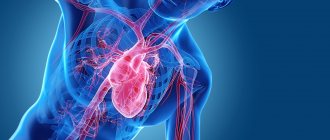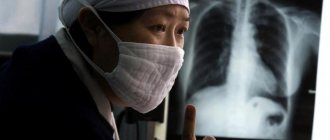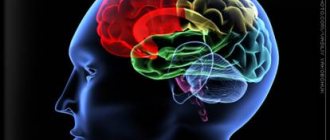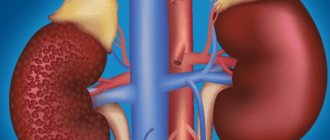What it is
Coronary insufficiency (CI) is a condition in which blood flow through the coronary (coronary) arteries does not meet the energy needs of the heart. In this case, myocardial ischemia occurs - damage to heart cells due to lack of oxygen and nutrients. Ischemia is a local process that occurs in the place of the myocardium (heart muscle) where its nutrition has been disrupted. The process of deterioration of blood flow itself is most often explained by a narrowing of the lumen of the blood-bearing vessel. Globally this can happen for 2 reasons:
- obstruction (blockage) of the artery lumen;
- spasm due to contraction of the vessel walls.
A combination of these reasons is also possible.
In this case, a person cannot notice any changes in his condition until the level of stenosis (narrowing of the lumen of the artery) reaches critical values. Or until the need of the heart for nutrition makes the stenosis significant. When these conditions are met, ischemia develops in the area of the heart muscle—an attack of angina, myocardial infarction, or even sudden cardiac death occurs. Thus, we can say that clinically coronary insufficiency manifests itself in various forms of coronary heart disease (CHD).
According to research, the number of patients with coronary artery disease in Russia exceeds 7.5 million people - this is a very high figure. Moreover, the prevalence among people of retirement age is 16% higher than among people of working age. That is, the incidence of the disease progresses with age. Men get sick earlier and more often than women.
List of sources
- Ageev F.T. , Skvortsov A.A. , Mareev V.Yu., Belenkov Yu.N. “Heart failure against the background of coronary heart disease: some issues of epidemiology, pathogenesis and treatment,” Regular issues of “RMZh” No. 15 dated May 26, 2000
- Lupanov V.P. “Algorithm for diagnosis and treatment of patients with chest pain and normal coronary angiogram (cardiac syndrome X)”, article in the journal “Breast Cancer”
- Akchurin R.S., Shiryaev A.A., Galyautdinov D.M. “Indications for coronary bypass surgery in patients with various forms of coronary artery disease,” Regular issues of “Breast Cancer” No. 19 dated 10/03/2002
Causes
Coronary insufficiency most often occurs due to obstruction or spasm of the coronary vessels of the heart or their branches. Let's take a closer look at each of these cases, as well as several more rare situations.
The image is a coronary angiography of the heart vessels. Source: Image by Mario Ohibsky from Pixabay
Artery obstruction
The most important and common cause of coronary insufficiency is atherosclerosis of the coronary arteries. Atherosclerotic plaques protrude into the lumen of the vessel and obstruct blood flow. In this case, chronic coronary insufficiency develops, which most often makes itself felt by attacks of angina pectoris.
Atherosclerotic plaques can also break off or contribute to damage to the inner surface of the vessel and thus provoke thrombosis, which will cause acute coronary insufficiency. Its most common manifestation is myocardial infarction. More information about atherosclerosis can be found here.
Artery spasm
Coronary insufficiency also occurs due to a sharp and prolonged spasm of the coronary arteries. Severe stress, mental and physical overload can lead to this. Often the listed factors complement the existing atherosclerotic lesion of the vessel, which results in angina pectoris or myocardial infarction. However, purely spastic coronary insufficiency is also possible.
Other reasons
There are other, more rare, causes of impaired blood supply to the myocardium:
- Congenital anomalies of the coronary vessels;
- Hypertrophic cardiomyopathy is a condition in which the existing vessels are not enough to meet the needs of the enlarged myocardium (a consequence of hypertension);
- Neoplasms in the chest, compressing blood vessels from the outside (tumor).
Risk factors
Some factors increase the risk of coronary artery disease:
- Male gender and age over 45 years are factors that cannot be adjusted in any way.
- Smoking affects both the development of atherosclerosis and the processes of thrombus formation. Cigarette smoke contains nicotine and carbon monoxide, which have a negative effect on the functioning of the cardiovascular system.
- Low physical activity, a sedentary lifestyle, excess weight and obesity contribute to thrombosis, atherosclerosis, and hypertension, which can lead to coronary insufficiency.
- Eating large amounts of food high in fat and cholesterol contributes to atherosclerosis.
- Chronic stress provokes prolonged spasm of the coronary arteries.
- Heredity - the risk of developing pathology is higher if relatives have it.
Coronary insufficiency
The most severe heart diseases are caused by structural defects and insufficient blood supply to the myocardium. Thus, coronary insufficiency is the most common cause of coronary heart disease and myocardial infarction. Most forms of pathology are characterized by a progressive course and long-term development. Untimely treatment is fraught with the formation of irreversible changes in the heart.
What is coronary insufficiency?
In the medical literature, coronary insufficiency is any condition in which partial or complete disruption of blood flow in the vessels of the heart occurs. A gradual deterioration in the delivery of nutrients and oxygen to the heart cells causes the development of coronary artery disease. The main causes of the disease include atherosclerotic changes in blood vessels and inflammatory processes.
The coronary arteries are part of the systemic circulation originating from the left ventricle of the heart. These blood vessels continuously supply the muscle cells of the organ with the components necessary to maintain pumping function. Even a short-term blockage of blood flow in the coronary arteries can cause myocardial infarction and cardiac arrest. In most cases, the narrowing of the lumen in the vessels of the heart progresses over a long time, so irreversible changes in the myocardium do not occur immediately. Sudden coronary insufficiency is a fairly rare form of the disease.
Medical practice shows that coronary insufficiency can develop even over several years. In the first years, as a rule, an asymptomatic course prevails, since the myocardial cells still receive sufficient oxygen and nutrients. Severe symptoms and severe complications are a sign of a late stage of the disease. Also, as coronary artery disease progresses, the risk of myocardial infarction increases significantly.
8
24/7
Causes
The exact cause of the disease is not always possible to find out. It is assumed that coronary insufficiency is formed under the influence of many pathological factors. The patient’s lifestyle is of particular importance, since atherosclerosis is a possible consequence of poor nutrition and bad habits.
Main causes and risk factors:
- Fat deposition on the inner wall of the coronary arteries due to atherosclerosis. There are different forms of cholesterol in food. Low-density lipoproteins make the greatest contribution to the development of atherosclerosis, while high-density lipoproteins are considered beneficial. In the presence of other negative factors, fatty plaques appear on the walls of blood vessels, gradually reducing their lumen. It is dangerous not only to reduce the volume of blood flow in the damaged artery, but also to the possibility of plaque tearing off with subsequent blockage of a smaller vessel.
- Smoking, alcoholism and drug use. Bad habits provoke most cardiovascular pathologies.
- Age over 55 years and male gender. Women are less likely to be diagnosed with coronary insufficiency.
- Family history. The presence of any cardiovascular disease in relatives increases the individual risk of developing the disease.
- High blood pressure. The long-term influence of hypertension causes a decrease in the lumen and thickening of the walls of blood vessels.
- Poor nutrition. Excess bad cholesterol, triglycerides and saturated fats increase the risk of atherosclerosis.
- Diabetes mellitus type 2. Type 2 diabetes and coronary artery disease share common risk factors. In addition, high concentrations of sugar provoke vascular pathologies.
- Excess body weight and insufficient physical activity.
- Anxiety diseases and stress.
- Metabolic diseases affecting the cardiovascular system.
- Disturbed breathing during sleep, accompanied by a sudden decrease in oxygen concentration in the blood.
- High concentration of homocysteine.
Often, coronary insufficiency is a complication of primary pathologies of the cardiovascular system.
Symptoms and signs
Symptoms depend on the cause of the pathology and the degree of disruption of the blood supply to the myocardium. Initially, symptoms may only appear during exercise, when high cardiac activity requires more blood flow to the myocardium. As the lumen of the coronary arteries decreases, the clinical picture worsens, and symptoms occur even at rest. Other heart and vascular diseases may aggravate the symptoms of coronary insufficiency.
Main manifestations:
- Pain in the chest area (angina attack). As a rule, pain occurs during physical activity or stress. Normally, the duration of an attack does not exceed 20-30 minutes. If the attack does not go away within this period of time, myocardial infarction may develop.
- Breathing problems. Chronic coronary insufficiency can cause insufficient blood flow to the lungs. Constant shortness of breath is accompanied by general malaise and fatigue.
- Worry and anxiety. During an attack, patients often experience a fear of death.
- Increased sweating.
Women often experience less typical signs of a heart attack due to coronary insufficiency. Pain can occur not only in the chest area, but also in the neck, lower jaw and lower back. In rare cases, a heart attack does not cause any symptoms.
Diagnostic methods
Cardiologists and cardiac surgeons deal with problems of the blood supply to the heart. During the appointment, the doctor will ask the patient about complaints, review the patient's history for risk factors, and perform a physical examination. The auscultation method allows you to detect an unstable heartbeat, which often occurs against the background of coronary heart disease.
Additional research methods:
- Electrocardiography – registration of bioelectrical activity of the myocardium. Special sensors connected to a cardiogram recording device are placed on the patient's body. The test results may indicate signs of angina or a heart attack.
- Holter study – recording of a cardiogram on an electronic device of a portable device within 24-48 hours. The patient is instructed to press the device button if an angina attack occurs.
- Echocardiography is a method of visualizing the heart using high-frequency sound waves. The doctor can observe the work of the organ on the monitor and assess the safety of functions.
- Stress test - obtaining a cardiogram during physical activity. For this purpose, simulators or special preparations are used. The test is necessary if other methods of obtaining a cardiogram do not reveal signs of the disease. A stress test can also be combined with echocardiography.
- Radionuclide study is a method for assessing blood flow in organs, involving intravenous administration of radionuclides followed by scanning. This way you can detect the area of the myocardium that receives less blood.
- Angiography is an X-ray examination of the coronary arteries. The patient is injected with contrast agents to better visualize the vessels.
- Blood test for triglycerides, low-density lipoproteins and enzymes that are indicators of myocardial infarction.
- Computed tomography and magnetic resonance imaging - scanning of the heart. Obtaining high-resolution images of an organ allows you to detect areas of insufficient blood supply. CT angiography is a more accurate diagnostic method than conventional radiography.
The use of several examination methods at once makes it easier to make a final diagnosis. Early coronary artery disease, which often has no symptoms, is also easily detected using various ECG tests and scans.
Methods of treatment and prevention
Treatment should be aimed at improving blood flow in the coronary arteries and preventing the dangerous consequences of the disease. Coronary heart failure in the later stages can cause myocardial contraction rhythm disorder, heart attack and heart failure, so timely treatment has a positive effect on the prognosis.
Medication methods:
- Drugs that reduce the concentration of bad cholesterol in the blood.
- Blood thinners (if there is a risk of arterial obstruction).
- Beta blockers to relieve attacks of cardiac arrhythmias.
- Nitroglycerin to dilate the coronary arteries.
- Angiotensin-converting enzyme (ACE) inhibitors and angiotensin II receptor blockers to lower blood pressure.
Surgical methods:
- Stenting of coronary arteries.
- Balloon angioplasty.
- Arterial bypass.
Thus, the main goal of surgery is to restore the natural anatomy of the coronary arteries or create a bypass blood supply to the heart. The combination of medical and surgical treatment methods shows the greatest effectiveness.
It should be noted that coronary insufficiency, the causes of which are partly related to primary vascular diseases, can be prevented. Giving up bad habits and fatty foods, moderate physical activity and reducing body weight are the main ways to prevent the development of the disease. Early consultation with a doctor for any cardiovascular ailments helps to identify insufficiency of blood flow in the heart at the stage of reversible changes.
8
24/7
Symptoms
Symptoms of coronary artery disease may vary from case to case. It is also not uncommon for patients to feel nothing strange about their condition until one day, for example, a myocardial infarction occurs.
Among the most characteristic symptoms of coronary insufficiency are:
Angina pain is a pressing, squeezing, burning pain behind the sternum lasting up to 10 minutes. Often appear during physical activity. May begin behind the sternum and then spread to the neck, back, shoulders, arms, jaws;
- Dizziness;
- Cold sweat;
- Pain in the stomach;
- Shortness of breath, especially with exertion;
- Sleep disorders;
- Weakness.
Important! If you notice such symptoms, especially against the background of unusual physical activity, you should immediately call an ambulance. This should also be done if angina has already been diagnosed, but the symptoms are not relieved by nitroglycerin and last longer than 15 minutes.
Source: Pavel Danilyuk: Pexels
The listed symptoms are characteristic of a chronic (reversible) version of coronary insufficiency, which manifests itself as angina pectoris. In the acute (irreversible) version, the described symptoms are more pronounced and last much longer - up to several days (with myocardial infarction). The pain is not relieved by nitroglycerin and can be so severe that it is necessary to resort to narcotic drugs.
Despite the fact that the main symptom of a heart attack is most often severe chest pain (80% of cases), there are other manifestations of the disease:
- Cough and shortness of breath;
- Sharp pain in the upper abdomen;
- Symptoms of brain damage.
An asymptomatic form of myocardial infarction is rare. The area of damage in the heart is not so extensive, and changes are recorded instrumentally after the fact.
Clinical picture
Clinically, coronary insufficiency is manifested by angina pectoris (see) or its equivalents (eg, paroxysmal shortness of breath), myocardial infarction (see), heart failure with the development of ischemic myocardial dystrophy and cardiosclerosis. Perhaps an atypical and clinically asymptomatic course of K. n. before signs of heart failure or sudden death occur. In the presence of angina pectoris or its equivalents, the severity of the chronic symptoms can be roughly assessed clinically. Ph.D. by the nature of the attacks and their connection with physical. load. The least severe first degree hron. Ph.D. characterized by rare attacks of angina pectoris (or its equivalents), occurring hl. arr. under extreme physical or emotional stress. Under K. n. of the second degree, there is a clear clinical picture of angina pectoris and decreased tolerance to exercise. load. Third degree K. and. characterized by frequent and severe attacks of exertional angina with a significant decrease in exercise tolerance and the addition of resting angina.
Chronic form
A typical manifestation of chronic coronary insufficiency is angina. Most often it is caused by atherosclerotic damage to the coronary arteries of the heart, which causes a narrowing of their lumen. During physical activity, the myocardium requires more blood, while the permeability of the artery is reduced - ischemia occurs with characteristic symptoms.
When attacks are predictable and repeated in response to a load of the same severity, they speak of a stable version of angina. Its course is relatively favorable and can be easily controlled. There are other options:
- Unstable angina is a form of angina in which a plaque in a coronary vessel undergoes ulceration, a thrombus gradually grows in the lumen, causing attacks to constantly progress and ultimately lead to myocardial infarction.
- Prinzmetal's angina (vasospastic angina) - occurs as a result of a sudden spasm of the coronary arteries.
We wrote about angina in more detail here.
Until this point, we were talking mostly about absolute coronary insufficiency, when the direct cause of the pathological condition was pathological processes in the coronary vessels. But there is also a relative form that occurs against the background of hypertrophic cardiomyopathy, which was discussed in the causes of coronary insufficiency. During this process, the myocardium increases in size due to the increased load, while new vessels do not appear. In this case, ischemia of poorly supplied areas also develops.
Treatment of chronic heart failure
The outlook for the disease depends on the underlying cause of the disease and the severity of the symptoms. The following are used in the treatment of chronic heart failure :
- Lifestyle changes - rational rest, lack of overload, adequate sleep, a healthy diet low in sodium and fat, weight loss, introduction of physical activity.
- Drug therapy - drugs to dilate the walls of blood vessels and support the heart. Among the main drug groups: ACE inhibitors, beta blockers, diuretics, angiotensin receptor blockers
- Surgical operations - coronary artery bypass surgery or angioplasty, installation of internal pacemakers, reconstructive operations, transplantation and much more.
Prevention of chronic heart failure is of paramount importance even after a full course of treatment due to the frequent development of relapses. The goals of the doctors at our clinic are to stop the pathological development of myocardial damage and prevent risk factors that can lead to disability and death. We competently correlate the data obtained as a result of diagnostics in order to develop an effective course of treatment based on them and restore the health of the person who contacts us.
Rate this article
Article rating 4.33 out of 5. Votes: 15.
Latest articles
Sexual transmission of infections
Sexually transmitted infections or STIs are dangerous diseases that can undermine health and lead to dire consequences. Most of the diseases in this group are…
Hormonal disorders
A woman’s well-being largely depends on the endocrine system. Any hormonal imbalance can cause a sharp deterioration in health, weakening the immune system...
Cervical dysplasia
Cervical intraepithelial neoplasia or cervical dysplasia is a precancerous condition expressed by pathological changes in cells. In most...
Sudden coronary death
Sudden coronary death (SCD) is said to occur when a person dies within no more than 6 hours against the background of apparent well-being due to a cardinal malfunction of the heart. At the same time, the patient loses consciousness and falls.
As a rule, the immediate cause of VCS is ventricular tachycardia and ventricular fibrillation. These are severe rhythm disturbances in which the efficiency of myocardial contraction decreases so much that blood does not flow to vital organs in sufficient volume.
WHO recommends at least 150 minutes of physical activity per week to help reduce the risk of VCS. Source: Mario Ohibsky from Pixabay
However, these arrhythmias are most often preceded by a severe attack of acute coronary insufficiency. Extensive myocardial damage as a result of this attack not only in itself reduces the contractility of the ventricles of the heart, but also contributes to the occurrence of arrhythmias.
Sometimes death can be prevented with timely assistance, but this is more typical for sudden cardiac death of an arrhythmogenic nature. In this case, the developing arrhythmia is of paramount importance, and coronary causes are secondary. Patients with diabetes are at increased risk of VCS.
Important! If you see a person suddenly lose consciousness, you should call an ambulance and, if you have the appropriate skills, perform primary resuscitation measures. Cardiopulmonary resuscitation should be resorted to if you do not detect a pulse and/or breathing in the victim.
Despite this threat in patients with coronary insufficiency, with well-chosen treatment and strict adherence to doctor’s orders, the likelihood of VCS becomes significantly lower. It is also important to seek medical help in a timely manner. It is known that several weeks before an attack, patients sometimes complain of pain in the chest, worsening mood, and fatigue. This means that some treatment measures can be taken before an attack occurs.
Symptoms of chronic heart failure
Characteristic manifestations that may indicate the development of the disease are as follows :
- the heart in the chest beats often, loudly, with anguish. When you feel your pulse, you can count up to 90 beats per minute.
Tachycardia syndrome- Shortness of breath - appears from minimal physical activity (climbing stairs, brisk walking, bending). Along with it, the cyclicity of inhalation and exhalation becomes more frequent. Breathing becomes shallow and superficial.
- Fatigue - even a slight load can cause a feeling of total fatigue, loss of strength, and emptiness. It takes time to recover. This symptom of chronic heart failure is pronounced. A short walk is enough to then sit on a bench for a long time, restoring your strength.
- Dry cough - single coughs can turn into paroxysmal coughs, during which sputum is released. In case of serious disorders, blood streaks may occur in the viscous discharge.
- Swelling of the extremities develops gradually, rising towards the heart. For example, swelling goes from the feet to the hips, from the tips of the arms to the shoulders.
Sometimes shortness of breath becomes asthma-like. In this case, the symptoms of lack of air intensify in a lying position, even if the person is in a state of complete rest. There is a classification of the disease, which is formed depending on the form of heart failure and the severity of its manifestations.
Diagnostics
Signs of coronary insufficiency can be suspected independently by detecting symptoms of angina pectoris, although an asymptomatic course up to myocardial infarction is not uncommon.
The following diagnostic methods are used in clinical practice:
- Coronary angiography is the gold standard in diagnosing cardiac vascular pathology; it allows one to visualize narrowing of the lumen in the coronary arteries and their obstruction. The technique is invasive - a catheter for administering a contrast agent is placed through the radial or femoral artery, so the study is performed in the operating room under local anesthesia.
- Optical coherence tomography of the coronary arteries is one of the new and accurate methods for visualizing problem areas in the coronary vessels of the heart. The method is also invasive and is performed in a similar manner to coronary angiography.
- Various types of echocardiography (Echo-CG) allow visualization of areas of the myocardium with impaired contractility, as well as many associated disorders.
- Myocardial scintigraphy - allows you to identify areas of the myocardium with impaired blood circulation, for which special radionuclides are used.
- Stress tests (treadmill test, bicycle ergometry) - procedures allow you to evaluate ECG changes indicating myocardial ischemia during physical activity.
Blood samples are also examined, paying attention to:
- Lipidogram - determination of cholesterol and the ratio of lipids in the blood to identify predisposition to coronary artery disease.
- Blood glucose - to exclude diabetes mellitus.
- Determination of the level of red blood cells and hemoglobin - to exclude iron deficiency anemia.
- Biochemical markers - study the levels of various enzymes that may indicate a heart attack.
Important: elevated blood cholesterol levels can significantly increase the risk of atherosclerotic plaques. They can become one of the causes of coronary insufficiency. Cholesterol may be too high due to a high intake of low-density lipoprotein (LDL) and low intake of high-density lipoprotein (HDL). A nutritionist will help you adjust your diet so that there are more “good”, low-density foods than “bad” foods.
Diagnosis
The diagnosis is based on clinical signs and examination data using special methods, primarily on the readings of electrocardiography (see). At the same time, attempts are made to objectively qualitative and quantitatively assess the inadequacy of coronary hemocirculation to the metabolic needs of the myocardium. For this purpose, a sample with dosed saline is widely used. load on a bicycle ergometer or treadmill (treadmill). Other methods, including the method of rapid electrical stimulation of the atria, have not yet become widespread. A reliable electrocardiographic criterion for K. n. during the exercise test, depression of the ST segment occurs during maximum (submaximal) physical exercise. load or some time later (2-5 minutes). Heart rhythm and conduction disturbances that occur during exercise tests are also considered as indirect evidence of K. n.
The depth of ST segment depression is in direct correlation with myocardial oxygen consumption and increased lactate levels in the coronary venous sinus. Along with this, during a spontaneous attack of angina, as well as when performing dosed physical exercise. load or electrical stimulation of the atria in patients with K. n. unambiguous hemodynamic changes develop: a rise in pressure in the pulmonary trunk, an increase in end-diastolic pressure in the cavity of the left ventricle and an increase in its end-diastolic volume. These changes are recorded both in coronary heart disease and in K. and. associated with rheumatic carditis, overdose of cardiac glycosides, hyperthyroidism, etc. Test with dosed physical. load primarily reflects functional disorders of the coronary circulation or electrolyte-metabolic changes in the myocardium.
To directly assess the state of the arterial system of the myocardium and identify the localization, extent and severity of occlusive lesions of the coronary vessels, as well as the compensatory capabilities of the collateral circulation, coronary angiography (see), scintigraphy with radioactive tracers is used (see Blood Vessels). When comparing coronary angiography data with myocardial scintigrams, a diffuse uniform distribution of the drug in the myocardium is noted at rest, and against the background of a positive stress test, a local decrease in the accumulation of the isotope in areas corresponding to the basins of occluded coronary arteries. Between ECG changes with dosed physical. There is no complete correspondence between the load and the results of coronary angiography or scintigraphy. With the functional nature of acute myocardial ischemia patol, changes on coronary angiograms are often absent or expressed very slightly.
Positive stress tests indicate the presence of K. n. and the severity of its wedge, manifestations, but do not characterize morphol, lesions of the coronary arteries. Negative results of these tests do not at all exclude the presence of K. n. Leveling of ischemic depression of the ST segment is possible with an inadequate choice of physical therapy. load or ECG recording technique, with functionally complete collateral circulation, despite stenosis of the main coronary artery, and even in the presence of an area of dyskinesia or akinesia of the left ventricle.
Treatment
When prescribing treatment, a cholesterol-lowering diet, moderate regular physical activity and weight loss are first recommended. If you have bad habits, you need to get rid of them. This is called lifestyle modification. Do not underestimate the benefits of such recommendations; in this case, they largely determine the success of treatment and the prevention of future complications.
Source: Michal Jarmoluk from Pixabay
Drug treatment
Drug treatment includes several groups of drugs:
- Beta blockers and calcium antagonists - these two groups reduce myocardial oxygen consumption and promote dilation of coronary vessels. These drugs are also effective for common concomitant conditions (hypertension and arrhythmias).
- Statins are drugs that help normalize the lipid profile of the blood. Prevents the growth of atherosclerotic plaques.
- Antiplatelet drugs - reduce the risk of coronary artery thrombosis by preventing blood clotting.
- Nitrates - this group of drugs eliminates the symptoms of angina attacks.
Surgery
Surgical treatment is resorted to when the level of blood flow disturbance in the coronary arteries becomes critical and cannot be compensated for with medication. In this case, we are talking about two operations: coronary artery bypass grafting (CABG) and coronary artery stenting.
Coronary artery bypass grafting is an open operation in which access to the heart is achieved through opening the chest. The idea is to restore blood flow in the coronary artery after the site of narrowing. This is accomplished by connecting the affected artery and a healthy large vessel through another vessel, forming a kind of “bypass bridge” for the flow of blood. The necessary connecting vessel (shunt) can be taken from the lower leg, forearm and other places.
It is important to know that the rehabilitation period is long due to the long fusion of the sternum. Although the operation is complex, it has been practiced in Russia for a long time and, as a rule, goes well.
Coronary artery stenting is a minimally invasive operation in which a narrowed section of a coronary artery is expanded from the inside using a special metal mesh. The heart is most often accessed through the femoral artery of the leg. This surgical intervention is easy and has virtually no recovery period.
Prevention
Prevention of coronary insufficiency essentially comes down to preventing the development of atherosclerosis and avoiding chronic stress. The importance of preventive measures increases greatly with age. Here's what you can do to significantly reduce the risk of progression and development of severe consequences of the pathology:
- Regular blood tests for lipid levels and cholesterol levels;
- Reducing the consumption of fatty foods;
- Regular moderate physical activity - at least 150 minutes per week;
- Getting rid of bad habits;
- Timely consultation with a doctor if appropriate cardiac symptoms appear;
- Minimizing stressful situations.
First aid for exacerbation
In the event of an acute attack, you should immediately call an ambulance. The patient's heart can stop at any moment, and it is impossible to resume its work without specialized equipment.
When the main task is completed, attention must be paid to stabilizing the patient’s condition. While waiting for an emergency team, you must:
- Provide peace. The patient should be immediately placed on a bed or sofa. If severe shortness of breath or cough occurs during an attack, the patient should be seated in a chair.
- Eliminate possible chest tightness. During heart attacks, even small loads, including clothing, have an impact on the chest area. The patient needs to completely expose the upper part of the waist, remove not only things, but also jewelry (beads, chains, pendants). If possible, measure your blood pressure
Provide fresh air. In acute coronary insufficiency, a squeezing sensation occurs in the chest area, making breathing difficult. By opening all windows, you can increase the flow and circulation of oxygen in the room. This will ease the patient's breathing and the stress on the heart.- Give medicine. The most common and effective remedy is Validol. It is able to reduce pain until the ambulance arrives. Validol is placed under the patient's tongue, and its effect begins within a few minutes.
Nitroglycerin is the second option for a heart attack. It also needs to be placed under the tongue. It acts faster, already within the first minute. If the pain has not decreased or the changes were insignificant, then after 10 minutes the tablet must be given again. This drug is contraindicated in people with low blood pressure.
There are many causes of coronary insufficiency. It can be triggered by both serious internal damage to the body and external factors. To maintain heart health, you need to take care of yourself, take preventive measures and give up bad habits.
Sources
- Coronary Heart Disease - nhlbi.nih.gov.
- Cardiovascular Therapy and Prevention, 2016; 15(2): 93–99 https://dx.doi.org/10.15829/1728-8800-2016-2-93-99.
- Kurdgelia T. M., Kislitsina O. N., Bazarsadaeva T. S. Sudden cardiac death: epidemiology, risk factors and prevention // BMIK. 2014. No. 3.
- Guide to faculty therapy: textbook / S. A. Boldueva, I. V. Arkharov, E. L. Belyaeva, E. G. Bykova, T. V. Ermolova, M. I. Ivanova, I. A. Leonova, A. P. Makhnov, N. S. Shvets, O. Yu. Chizhova; edited by S. A. Boldueva. — 3rd ed., add. and processed - St. Petersburg: Publishing house of North-Western State Medical University named after. I. I. Mechnikova, 2021. - p. 6-32; 64-76.
- Picard F., Sayah N., Spagnoli V., Adjedj J., Varenne O. Vasospastic angina: A literature review of current evidence. //Arch Cardiovasc Dis - 2021 - Vol.112 - No. 1 - p.44-55










